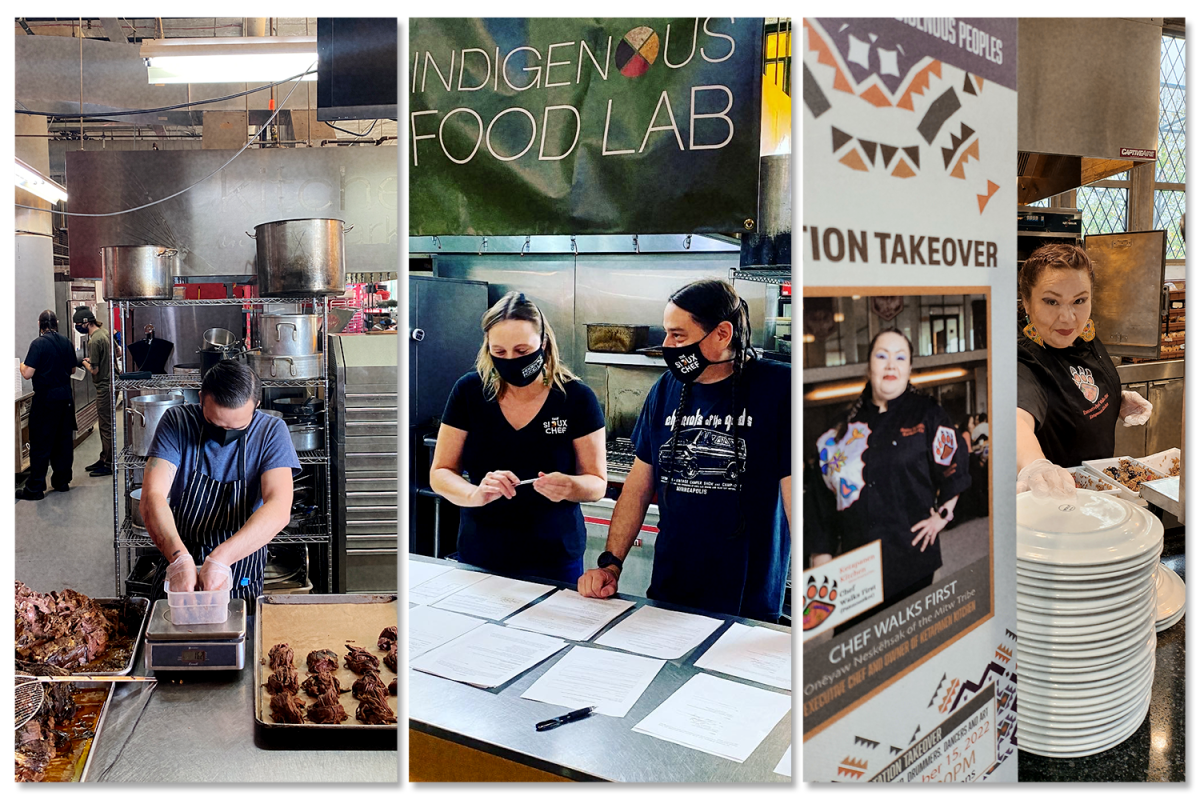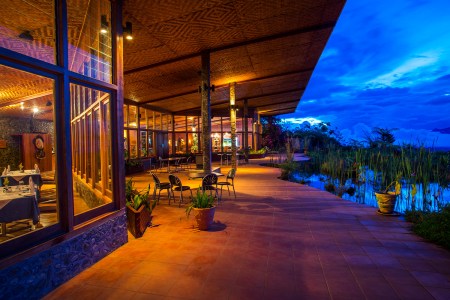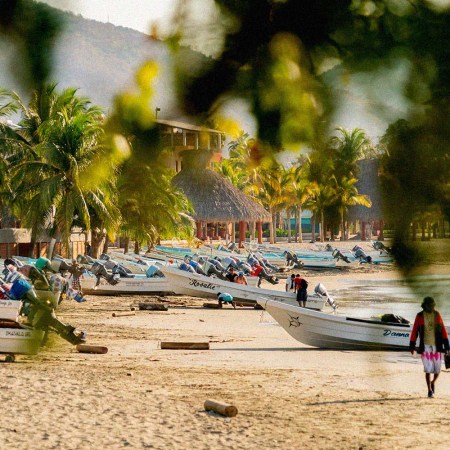Owamni by The Sioux Chef won the 2022 James Beard Award for Best New Restaurant earlier this year, marking a potential watershed moment for what’s ironically a nascent movement to recognize and celebrate Indigenous cuisine in the United States. “Winning Best New Restaurant helps us raise awareness about the importance of culturally relevant foods,” says Dana Thompson, co-owner of The Sioux Chef along with chef Sean Sherman, and the co-founder of the nonprofit NāTIFS, or North American Traditional Indigenous Food Systems.
That’s not to say it’s a new idea, or that hard work hasn’t been taking place for generations. However, there’s palpable momentum today, and more chefs, restaurateurs and entire communities are getting a chance to have their say, and to be heard and respected on a national stage.
“We have been moving towards food sovereignty for quite some time,” says chef Jessica Walks First, owner of Chicago’s Ketapanen Kitchen.
The result is a long overdue collective awakening to the fact that Indigenous cuisine is American cuisine, as obvious as it may sound. “Over 50% of our grown foods in the United States are Indigenous,” Walks First says. “People eat Indigenous foods every day and don’t realize it: corn, beans, squash, potatoes, sweet potatoes, watermelon, maple syrup, cranberries, blueberries, strawberries, ramps, morels, turkey, lobster, duck and bison are all Indigenous foods.”
Food is never just food, though. Especially when it’s Native. “It’s an act of resistance that we even exist since our Indigenous communities have experienced genocide, forced assimilation, removal from homelands and continued oppression,” Thompson says. “To be seen and to have Indigenous people raised up has been incredible.”
And make no mistake, the recognition is new and the impact is relevant. “The landscape has been almost completely absent of First Nations foods,” Walks First says. “And although our numbers are still small, ripples become waves and one day Native chefs won’t be an anomaly.”
Those ripples are flying in the face of what is a purposeful absence, rather than an accidental oversight. “It’s by design that there are so few Native restaurants in the U.S. and Canada,” Thompson says. “It’s because of white supremacy that Indigenous peoples were devalued, unseen and their culture systematically destroyed. With that being said, Native wisdom in its essence is the path to sustainability. Awareness about our impact on the earth is the starting point for all of this work.”
The progress being made thus far in terms of education and awareness, not to mention the wonderful meals and experiences which result, is hopefully only the opening foray. “I don’t see this movement stopping,” Walks First says. “I think this is just the beginning of something bigger. I’ll say it again, one day Native chefs and Native foods will not be an anomaly. One day we will have restaurants in every state and major city; one day we will see traditional foods infused into menus of educational institutions; one day these foods that mean so much to us will be more accessible and affordable; one day we will find ourselves in places and spaces that we have only dreamed of.”
For the hungry among us who already believe that food is one of the best avenues towards participating in, sharing and understanding culture, there’s a growing number of delicious opportunities to explore the scene, with world-class restaurants worth traveling for and hotels more than worth checking into. Here are just a few of the shining examples to seek out.
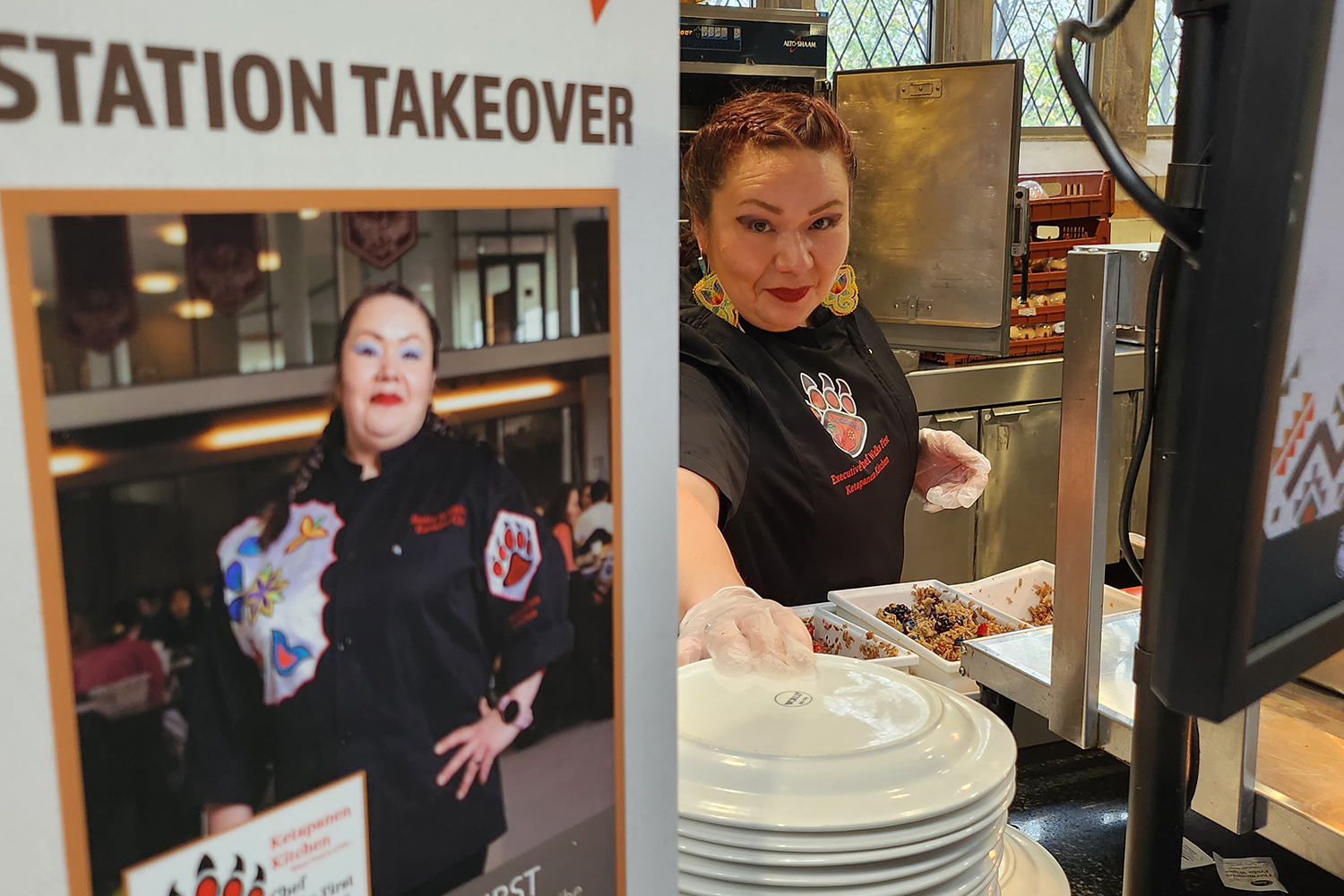
Illinois: Ketapanen Kitchen
Chef Walks First’s pop-up and catering operation, based out of Chicago, Illinois, is the result of an outpouring of her own passion.
“I didn’t want to do what others were doing, I wanted to do something that held meaning for me, something that was driven from the heart,” she says of Ketapanen Kitchen. “Growing up I was taught that food not only nourishes your body, it nourishes your spirit, and when you cook, you do so with good thoughts, feelings and prayers in your heart because that is where the soul nourishment emanates from, from head to heart to hands to food to soul.”
With her food, she aims to showcase the inter-tribal nature of Native peoples from the Americas, while delivering guests the experience of sharing a meal as a family. “We sustained so much loss of culture that we often borrow and share among tribes, and I wanted my menu to feature various regional and tribal ingredients from North America down to South America,” she explains. “We often forget that those south of the border are our Indigenous brothers and sisters. I wanted to encompass those connections in a variety of ways through traditional and contemporary dishes, and I want people to understand our contributions to our current foodways, to appreciate them but also to understand the importance foods play in our culture.”
Meet the Daring Father-Daughter Motorcycle Duo Who Are Defying Stereotypes About Pakistan
Biking through idyllic meadows, mountain valleys and high-altitude deserts, they’re on a mission to discover and promote the beauty of their countryKetapanen Kitchen is a first of its kind endeavor for the city, with Walks First — a member of the Menominee Indian Tribe of Wisconsin who was born on the reservation but raised in Chicago — partnering with her husband Tony Garcia, as well as her mentor, chef John Abels. Her current operation is only the start of a multi-pronged expansion that’s already underway.
“We’re working with the Field Museum and Pilot Light as well as several major universities,” she says. “Our menu will be featured at the Field Museum’s Bistro Cafe this November. We are also working on launching Chicago’s first Native food truck and cafe. We are currently the first and only Native American catering company, and I have the distinguished honor of being Chicago’s first Native American executive chef.”
Walks First is also proud of others from Native communities who are taking major strides forward these days. “I am really proud of the work Intertribal Agricultural Council has done to certify Native producers and identify them in the market,” she says. “Chef Brian Yazzie does amazing work in the Minneapolis-St. Paul area. He’s the owner of Intertribal Foodways, and the executive chef of the Gatherings Cafe. They served meals to elders and the community, and he’s currently working on an expansion into a new kitchen with a focus on catering.”
A rising tide is finally beginning to lift all boats for Native chefs and producers. “The few of us who were able to attain visibility in the culinary industry opened doors for more to follow,” she says. “I think that’s why we are seeing more chefs emerge from our communities.”
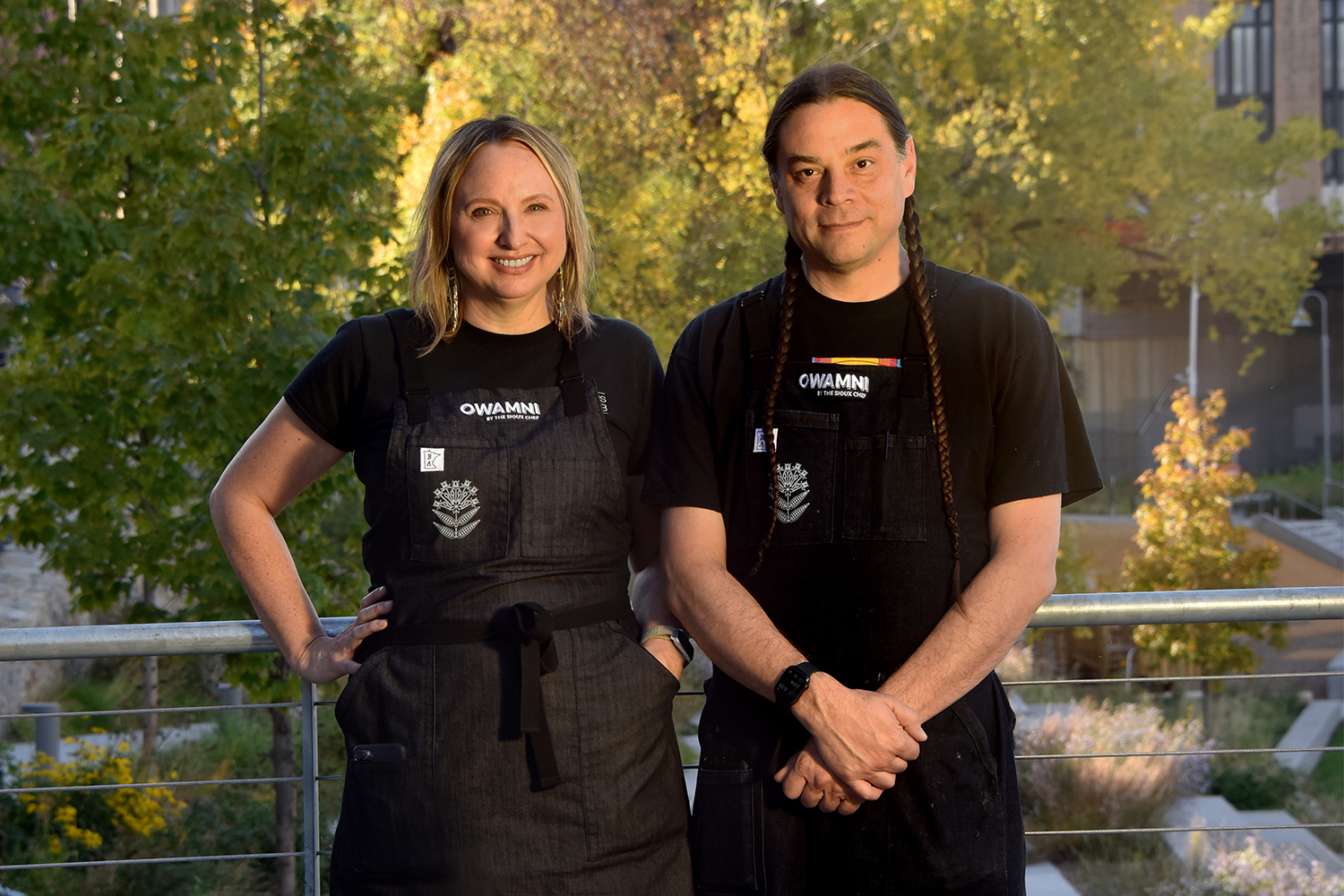
Minnesota: Owamni
Award-winning Owamni in Minneapolis is dedicated to the idea of decolonized ingredients, what they refer to as the true flavors of North America. “I call the restaurant a ‘passive education’ in that people come through with little to no knowledge of Indigeneity and learn the language, history, stories and so much more,” Thompson says. “Removing the colonial ingredients such as wheat flour, dairy and refined sugar, and even removing beef, pork and chicken, helps us to move towards biodiversity. We are looking at Native agriculture, wild plants and a diverse array of proteins such as quail, rabbit, bison and even crickets.”
The latest menu is a tour de force in such offerings. Examples include game tartare made with Cheyenne River bison and duck egg aioli, nixtamalized Native corn tacos with cedar-braised bison or grilled forest mushroom, plant dishes such as hand-harvested wild rice, and choginyapi corn sandwiches with turkey, elk or the three sisters (squash, corn and beans).
There’s more to come from The Sioux Chef team behind Owamni, too. “Through our nonprofit NāTIFS, my role will focus on understanding how having access to your own culturally relevant foods impacts healing physically, mentally and environmentally,” Thompson says. “I plan to spend the next several years working with epigenetic scientists to study the impact that food has on holistic wellness.”
She hopes to continue spreading and amplifying their message, and building on the results seen thus far with even greater achievements in the years ahead. “The first project under NāTIFS is the Indigenous Food Lab, we are taking this message to communities all over North America and beyond,” Thompson says. “There is so much work to do, and our partners are already doing it in places like Montana, Alaska, Arizona, Canada and more. The movement has a lot of momentum. We hope to open Indigenous Food Labs all across North America!”
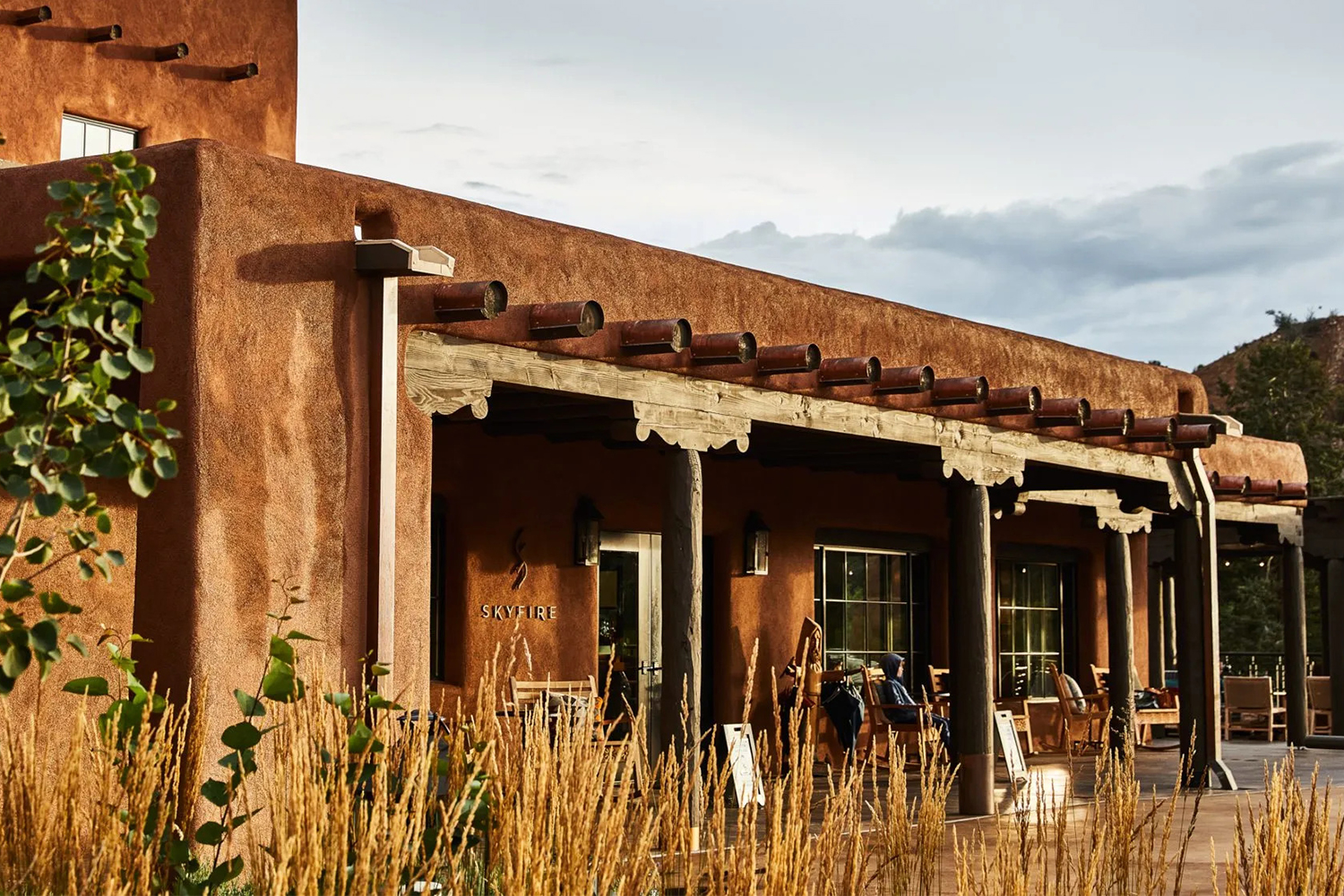
New Mexico: Bishop’s Lodge
Bishop’s Lodge, an Auberge Resorts Collection property in Santa Fe, New Mexico, showcases the region’s Native traditions in a variety of formats. One such avenue is through hosting fireside Native storytelling sessions with Navajo artist and musician Ehren Kee Natay. Guests will get to enjoy traditional blue corn atole, a soothing hot corn beverage, while being regaled with tales.
At SkyFire, its signature restaurant, a dinner series highlights both Native food and art. Executive chef Pablo Peñalosa seeks to showcase Indigenous influences alongside other cultures, including Latin American and Mexican. “It is about discovery,” he says. “Discovery is humble. I am here to learn new flavors and to try to play with them.” A recent example included Native designer and metalsmith Kenneth Johnson, who collaborated with Peñalosa to present a dining experience incorporating food and art; next year, Sean Sherman of Owamni will make an appearance as guest chef.
A Look Inside the Papua New Guinea Eco-Resort Where Mick Jagger Stays
With the prevalence of dancing and singing festivals, it’s no surprise this area of Papua New Guinea is rockstar approvedGuests at the hotel also receive a welcome gift featuring the three sisters of corn, beans and squash. As the hotel explains, “These crops have been the core of Native American agriculture and culinary traditions, and when planted all together, work to help one another thrive and survive. Our welcome amenity is an offering; an invitation to mindfully enjoy what has been the most important crops for the Native American communities.”
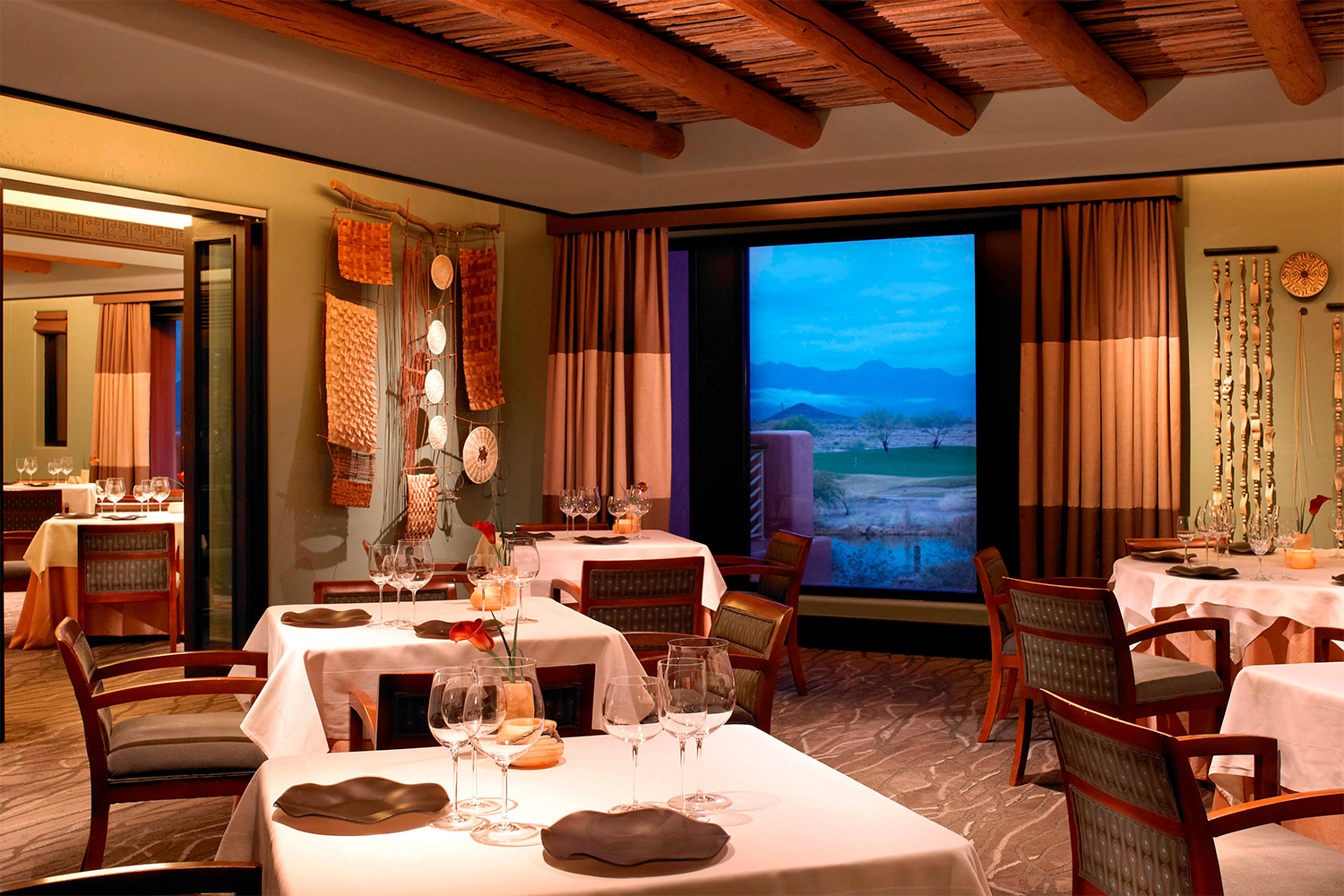
Arizona: Kai Restaurant
Kai is a Native-focused restaurant within the Sheraton Grand at Wild Horse Pass in Chandler, Arizona. Chef de cuisine Drew Anderson incorporates flavors and dishes from the Pima and Maricopa tribes, and the restaurant, whose name means “seed” in the Akimel O’odham language, uses ingredients from the Native Seeds/SEARCH foundation, a nonprofit preserving ancient, Indigenous seeds which would have otherwise been lost to time.
“In the support of local Indigenous farmers and purveyors, the history of the land is respected and preserved,” Anderson says. “This is integral to what we do at Kai, weaving the histories of Indigenous people of this land through a dining experience of foods coming from the Sonoran Desert.”
Anderson hopes that his food, and the restaurant as a whole, serves as an educational platform for learning more about Native culture. “Our ethos is to educate our guests through a dining experience about the food and culture of the community that we are [located] on,” he says. “We hope that every guest takes with them a sense of where they are in the world and the impact that their choices can have on the land and others.”
While a la carte dining is available, the highlight from the restaurant is The Journey, a set, multi-course menu with wine pairings. Think dishes such as grilled tribal buffalo tenderloin with smoked corn puree, cholla buds and saguaro blossom syrup. “The message of Kai is spread through its food, to help realize that you can take simple ingredients and elevate them to a level that not only showcases them in a new light but expands on their infinite potential,” he says.
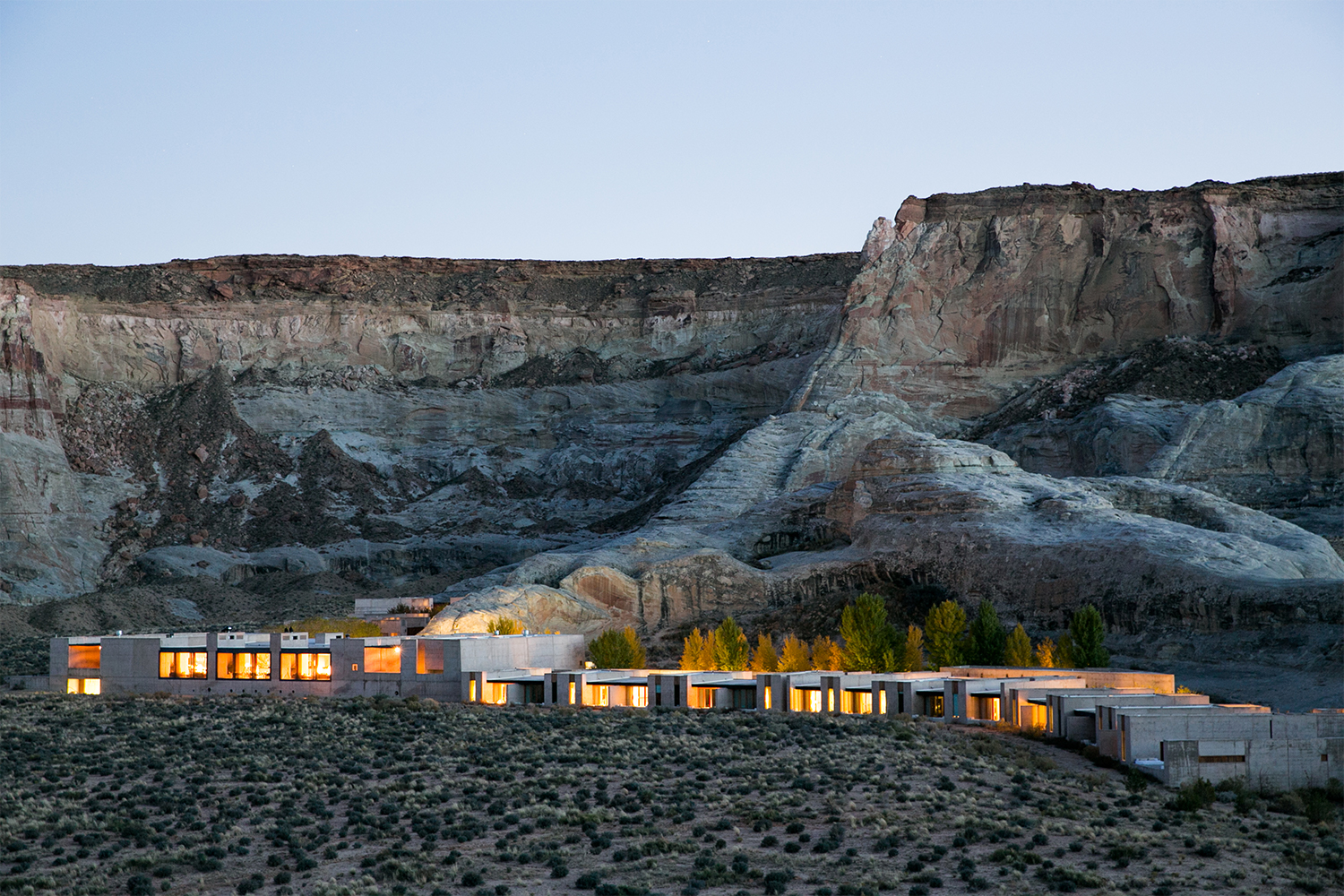
Utah: Amangiri
Utah’s Amangiri resort has a well-earned reputation as one of the most jaw-dropping and extravagant getaways on the continent. Its design is meant to be seamless with its surroundings, drawing inspiration from the desert and mountains, and its culinary program does the same. But beyond luxury that’s in tune with its environment, the culinary program has been built from the ground up to do the same, using ingredients sourced from local Native co-ops and other southwest Indigenous communities, with a recent menu including Navajo, Maricopa, Akimel O’odham, Paiute and Hopi ingredients.
Dishes might include a Native green salad with field greens, pickled nopales, charred tomato and prickly pear miso vinaigrette, Rocky Mountain elk tartare with pickled cactus and free range hen yolk, and three sisters curry served with Sonoran Desert grains and seasonal heirloom vegetables. The concept is best exemplified in the main restaurant’s Spirit of the Journey menu. This is a multi-course offering dedicated to Native flavors and ingredients, with dish descriptions highlighting not only the tribes they’re from, but also their significance.
Amangiri also hosts a collection of cultural experiences meant to provide further means of education, including of the ecology, geology and human history of the area, and the traditions of its neighboring Indigenous tribes.
For instance, Eli Secody, who was born and raised in the Navajo Nation, shares stories of how the Navajo have lived in harmony with the region and nature at large, while local Navajo artist Pearl Seaton teaches the art of Native American weaving. Elsewhere around the resort, guests may have the chance to experience Tomas Hunt, also born and raised in the Navajo Nation, perform the traditional hoop dance, while Peter MacDonald, one of the last surviving World World II Navajo code talkers, sometimes visits the property and shares his personal story and journey.
Every Thursday, our resident experts see to it that you’re up to date on the latest from the world of drinks. Trend reports, bottle reviews, cocktail recipes and more. Sign up for THE SPILL now.
